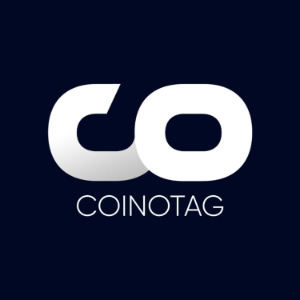CME’s XRP Futures Are Live: A Comparison with BTC, ETH Debuts
2 min read
The launch of futures contracts for cryptocurrencies on regulated trading platforms like the Chicago Mercantile Exchange (CME) is often significant, signaling institutional acceptance and opening the door for broader market participation. As such, first-day trading volumes can offer a valuable glimpse into market sentiment, liquidity, and investor appetite. With XRP joining Bitcoin (BTC) and Ethereum (ETH) on the CME Group’s derivatives platform, comparisons are inevitable. XRP’s CME Debut: A Modest but Meaningful Start As CryptoPotato reported , on May 19, CME officially launched two XRP futures products: a standard contract, listed under the ticker code XRP, representing 50,000 tokens, and a micro contract (MXP) covering 2,500 XRP. With XRP trading at about $2.39, data from the exchange shows that the futures contracts recorded a combined notional volume of just over $19 million. This included 150 standard contracts totaling around $17.9 million and 207 micro contracts contributing roughly $1.23 million to the pot. In contrast, the launch of CME’s Bitcoin futures in December 2017 saw a far larger volume. According to CME statements at the time, on the first day, 1,049 BTC contracts were traded, equivalent to 5,254 BTC, given that one contract represented 5 BTC. The trades amounted to just over $100 million in daily trading volume, based on an average Bitcoin price of $19,100. On the other hand, ETH futures, launched on February 8, 2021, had a more tempered start compared to their Bitcoin counterparts. They registered over $34 million in day-one volumes, with 388 contracts traded. Each contract represented 50 ETH when the world’s second-largest cryptocurrency by market cap was priced at around $1,800. Why the Discrepancy? Several factors may help explain the difference in launch volumes. First, market maturity and timing played an important role. CME’s BTC futures debut in 2017 came in the middle of a frenzied bull market and unprecedented media attention. Ethereum’s 2021 launch also benefited from bullish sentiment and growing institutional interest as decentralized finance (DeFi) and non-fungible tokens (NFTs) pumped network usage. Meanwhile, while institutionally significant, yesterday’s introduction of the derivative platform’s XRP futures occurred in a market trying to find direction. Furthermore, the token still faces some regulatory headwinds. A long-running legal battle with the U.S. Securities and Exchange Commission and Ripple Labs over the status of XRP, which many thought had finally concluded, hit a setback when Judge Analisa Torres rejected a proposed $50 million settlement between the two parties, citing procedural errors in their joint filing. Additionally, contract specifications matter. CME’s BTC and ETH contracts were traded at a time when there weren’t many crypto derivatives around, helping concentrate volume on the Chicago-based platform. However, its XRP product has entered a more competitive market, with well-established alternatives on Binance, Coinbase, and others. The post CME’s XRP Futures Are Live: A Comparison with BTC, ETH Debuts appeared first on CryptoPotato .

Source: Crypto Potato



